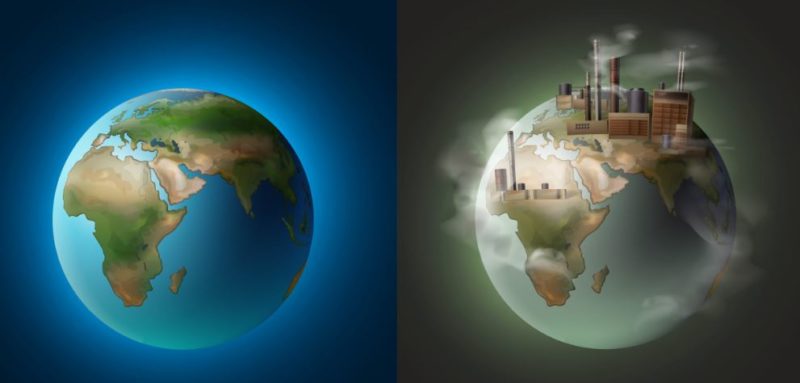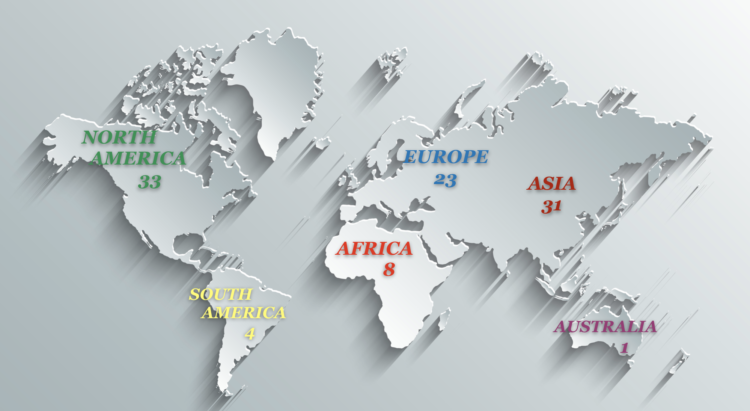

Who's to blame? Who needs to fix ?
A study conducted by CDP and the Climate Accountability Institute found that the top in the world, working in the fossil fuel sector either as miners, producers etc are responsible for 71% of the total industrial greenhouse gas emissions since 1988.
The report found that these 100 companies are the source of 635 billion tonnes of (Green House Gas) GHGs emitted since 1988 and that over half (52%) of all global industrial GHGs emitted since the start of the industrial revolution in 1751, have been traced to these 100 fossil fuel producers.
So here are some of the more interesting take aways from the list of 100 firms
A. Continents they come from:


The maximum number of polluters are from North America and Asia, followed closely by Europe. However, it seems like a safe bet to make that firms in Europe and North America will be cutting down on their impact, even as Asia the most populated continent with rapidly developing economies in China, India and the Southeastern Countries struggles. Be it phasing out coal, oil or the demand for other resources, Asia-based firms will have tougher time than most.
B. Polluters By Country:


Predictably, the United States comes out way ahead of the rest with more than a quarter (27) of the 100 companies, having a base in the states. The surprise is the no 2, Indonesia, home to 7 of the firms on the list and surprisingly comes out ahead of China, the leading consumer of Coal in the world. India, predictably, clocks in with its three big PSU’s in coal, oil and coal again. In the form of Coal India, ONGC, and Singareni Collieries.
C. Developing or Developing Economies:
If you ever needed proof that the burden of global warming is being unfairly placed on developing countries, then this shd make you think. The report found that almost a third (32%) of historic emissions come from publicly listed investor-owned companies, 59% from state-owned companies and 9% from private investment and over half of the global industrial emissions since 1988 could be traced back to just 25 corporate and state producers. Most of these companies (57 of 100) that have been in business for well over half a decade now, were in fact founded in stable and developed markets, and are a big part of these developed economies sustaining their status.
D. Types of Emitters (Government-owned and Private companies or entire countries)
The report by CDP also projects that Private entities or privately owned companies are in majority in comparison to government-owned companies. However, most of the govt-owned companies are bigger CO2 emitters than their private counterparts. There is a third category listed by the CDP- entire country as an emitter. 7 countries make the list topped by China, then followed by Russia, Poland, Kazakhstan, and Ukraine.
Even if we add the countries to the Government-owned companies, the number of private firms exceeds the number of privately owned companies by 18%.
E. Industry-wise segregation of 100 emitters listed by CDP (Coal, Mining, Oil & Gas, and other activities)
Contrary to popular belief, a majority of the emitters are purely in the Oil and Gas sector, 29 out of 100 to be exact. Also out of the 34 government-owned companies, 31 were in the petroleum sector in the form Oil and gas explorations or allied services, the rest 3 were Coal giants of the countries. The majority was lead by Middle-east, followed by China and North African oil-producing countries. All three Indian entities also make the list-Coal India, ONGC, and Singareni collieries.
Thirty-Seven private Oil and gas companies have their names in the list by CDP, but they also have a subsidiary business like petrochemicals and advanced fuels. Only Maersk, a global shipping conglomerate was in the list of top polluters, which had no Coal, Oil, and gas or mining interest. Majority of US-based companies, which are publicly held or are holding companies, crowded the list.
For Coal emitters, their numbers are lower only by a fraction, to 25, but they make their presence felt by holding top ranks. Companies like BHP Billiton and Consol energy for a very small number of 4 whose interests lie in all- Oil and gas, Coal, Mining and other related activities.
In a significant move toward advancing green energy and industrial growth in the state, Himachal…
Golabl chemical conglomerate BASF has announced that its now offering the world’s first biomass-balanced polyethersulfone…
In a crucial stint to bolster the biogas sector and sustainable dairying in the country,…
TotalEnergies SE has received approval to proceed with its Middlebrook solar and battery project in…
Andhra Pradesh Chief Minister Chandrababu Naidu has inaugurated the Rs 1,000-crore green hydrogen plant of…
The BITS Pilani has developed an innovative solution for managing landfill leachate, domestic septage, and…